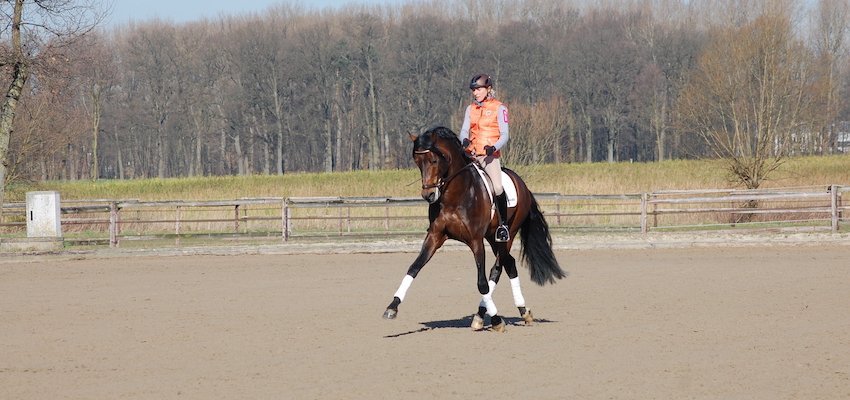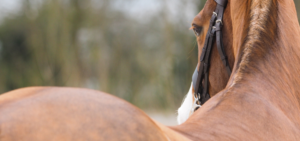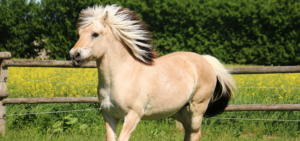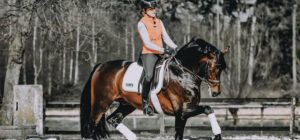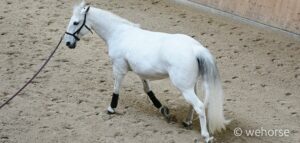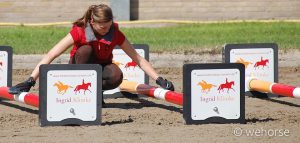Equestrian competitions are often under attack. At times very unpleasant pictures can be seen where the riders train with non- horse-friendly methods to subdue their horses in the hope of being successful at the test. But competitions can and should be fun for horse and rider and also a great addition for training and overall progress. This article wants to inform you about how riding a dressage test can be successful and fun.
Summary
- Dressage Competitions Explained
- What and How is Judged?
- Absolute No-Gos
- Dress to Impress
- What Do the Judges Want to See in the Test?
- Tips for Preparing Before the Test
Dressage Competitions Explained
In dressage competitions, horses and riders are presenting different exercises and movements in front of a ground judge who analyzes the performance and gives grades afterwards. Horses and riders are expected to perform (often from memory) a series of predetermined movements in a standard arena.
Each movement and also the overall impression are judged on the basis of an objective and common standard: So the performance is not graded in relation to the other competitors. This standard is applied individually to the level of the test and thus sets a different focus dependent on the level of rider and horse. Although many horses and riders are competing against each other, the tests are usually completed by only one horse and rider combination at a time.
Each level has several tests that include similar exercises on the same scale of difficulty. In the easier levels, only basic gaits and large circles are asked for. Lateral movements or even collection are not required in early levels. The exercises gradually become more challenging and are linked to the horse’s general progress.
The goal is to develop by standardized training methods, a good riding horse who’s agility, strength and confidence is encouraged by dressage.
What and How is Judged?
The different difficulty levels are regulated individually by the National Federation of each country. In Germany for example, the easiest level is E and from there on it goes up to A and L which are considered easy till medium level and then it goes on with M and S which are very challenging. There can also be stars behind the letters indicating a more advanced difficulty within a level.
In the UK, the levels are named: Intro, Novice, Elementary, Medium, Advanced Medium, Advanced, Prix St George, Intermediate I, Intermediate II and Grand Prix.
All dressage tests contain several movements and exercises. Each segment of them is judged and graded. The scale of grading goes from zero which means “not executed” to 10 being “excellent”.
10. Excellent
9. Very good
8. Good
7. Fairly good
6. Satisfactory
5. Marginal
4. Insufficient
3. Fairly Bad
2. Bad
1. Very bad
0. Not executed
Additional criteria of grading, apart from the dressage movements and general harmony in the performance, are: The horse’s gaits, impulsion, rideability, the rider’s seat and aids.
Some segments are given increased weight if they are considered to be particularly important to the horse’s progression.
If you want to know how you can achieve a balanced rider’s seat, our courses contain engaging exercises to prepare you for your next competition.
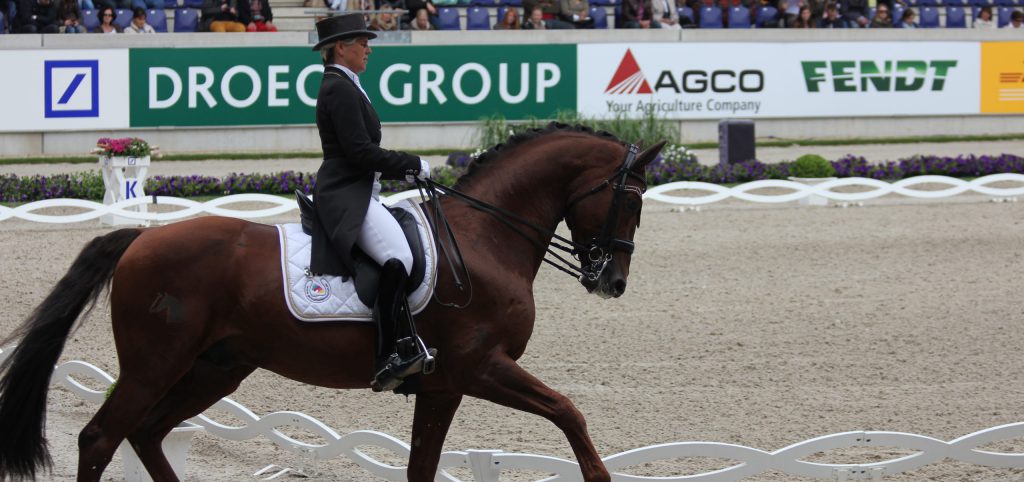
Absolute No-Gos and Penalities
On the show ground, there are usually supervisors who control the correct handling and training of the horses in the warm-up arena. Next to judges, these supervisors can warn and also disqualify riders that treat their horses in a not tolerated and not horse-friendly manner.
An example of a not tolerated training method would be riding the horse in Hyperflexion or using the spurs and the whip excessively. If the horse bleeds and it is caused by the bit or the spurs, the rider is disqualified immediately. Also forbidden, is the use of drugs that are supposed to enhance the horse’s performance. It is also possible that the rider is blocked for a certain amount of time and can’t start at dressage tests or competitions for a determined period.
During the test, riding the wrong track is penalized by additional points to the final score. A fall in the dressage ring as well as failing at riding the right test too many times can result in elimination.
Dress to Impress
In a dressage test the requirements for the equipment are first of all; a proper saddle in the English-style. For lower levels, a simple English-type saddle may do but for higher classes, a specific dressage saddle is required. Usually, a white saddle pad is placed below the saddle. Next, a bridle with a bit that has all the standard leather applied to it, is necessary.
Dressage horses are shown in minimal tack, so they are not permitted to wear boots (e.g. hoof or bell boots) or wraps like bandages during the test. Martingales or similar rein devices such as a Gogue are not allowed either. Due to the formality of dressage, tack is usually black leather, although dark brown is getting more popular.
In a dressage test the horse is expected to have its mane braided and a combed and smooth tail, as well as polished hooves: The braids can vary in size and may be put in fewer and larger braids or more and smaller braids. The tail is considered as an extension of the horse’s spine and indicates if the horse is relaxed and content or not. It should be cut straight across above the fetlocks.
Bangles, ribbons, or other decorations are usually not allowed in the horse’s mane or tail due to their potential of distracting the judges. If whips are most of the time not allowed, they can be tolerated in some young horses or low-level classes but their length is regulated.
Dressage riders, like their horses, are dressed for formality. In competition, they wear white or cream riding breeches, a white shirt, and a black, brown, or sometimes even navy coat. The gloves are usually white and the tall boots and riding helmet black or brown. In upper-level classes, the riders wear a tailed jacket, a top hat that matches the coat, and spurs.
What Do the Judges Want to See in the Test?
Dressage is a form of art: According to the International Equestrian Federation, it is “the highest expression of horse training” where a horse – at its peak of gymnastic development- can respond smoothly to the rider’s minimal aids. All movements look effortless and the rider gives invisible aids. This is the goal and to achieve this, every rider should follow the training scale that is based on a progression of six steps which are however also interconnected.
The German National Equestrian Foundation has established these steps as part of the training scale:
- Rhythm and regularity
- Relaxation
- Contact
- Impulsion
- Straightness
- Collection
While riding a dressage test, the judges want to see that you and your horse are meeting the expectations of your particular level and that you have reached certain steps of the training scale. In an easier level that would be a correct and steady rhythm, a relaxed horse, and a soft contact between the horse’s mouth and the rider’s hands. In more advanced levels the judges expect to see a horse that moves with impulsion and is straight in its body while performing exercises. At even higher levels, it is necessary for the horse to move in collected walk, trot, and canter because otherwise challenging movements like pirouettes or tempi changes wouldn’t be possible.
But of course, not only the correctly performed movements are important while presenting yourself and your horse in a test: The main focus should be to have fun in the arena and to be a good partner to your horse. Give him security and clear aids because the judges like to see that the rider really “rides” his horse and not just lets himself get carried around. Harmony and teamwork are more important than impressive gaits or immaculate executed exercises.
Do you want to easily command precise movements in competition? Elevate your riding skills with our courses!
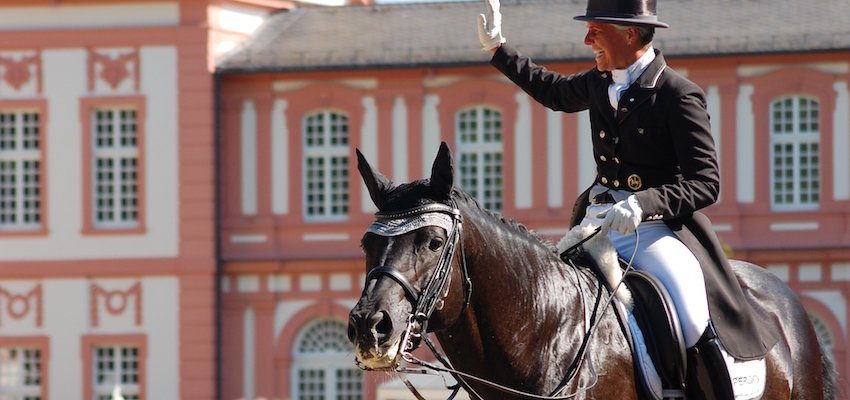
Tips for Preparing Before the Test
There is a lot to think about when participating in a dressage test. It starts with finding the right test. You must be aware of your entry-level and if it fits the program. Then a few costs must be taken into account, for example, the entry fee or the registration of your horse for competition purposes. You should inform yourself beforehand which vaccinations your horse needs that are required by the organizer.
Also, keep in mind that the organizer does not always manage to acquire a farrier or vet for the show ground. Have the telephone number of your own farrier and vet with you, just in case something should happen at the competition.
If you want to train with your horse for the dressage test, wehorse offers a wide variety of courses that can help you! For more information, expert tips and training inspiration, simply click here.
Also don’t forget to practice the situation that occurs after the test: In case you are placed, you have to participate in the awards ceremony in order to receive your ribbon or prize money. So stage an awards ceremony in your home training and get your horse used to loud music, applause, banners and flower pots. Better be prepared in case the arena on the show ground may look spooky to your horse!
Now we have finally made it to the competition: Your horse and yourself are tacked up, the show secretary’s office has registered you and you are ready to start. Now the next step before riding the test, is getting warmed up in the warming-up arena. Keep in mind to only loosen your horse’s muscles and tendons and not to ask too much of him and thus over acidifying the muscles and overwhelming him. The warm-up phase should focus on the first three steps of the training scale. Don’t tire your horse and yourself.
And now the last two last pieces of advice: Tighten the girth in good time. If you wait too long, the saddle might fall into an unfavorable position. Keep your distance from other horses. In such an exciting environment, it isn’t unlikely that a horse gets spooked and runs off. If your horse is too close to another horse in such a situation- accidents can happen quickly. This is certainly something we can do without on a competition day!

